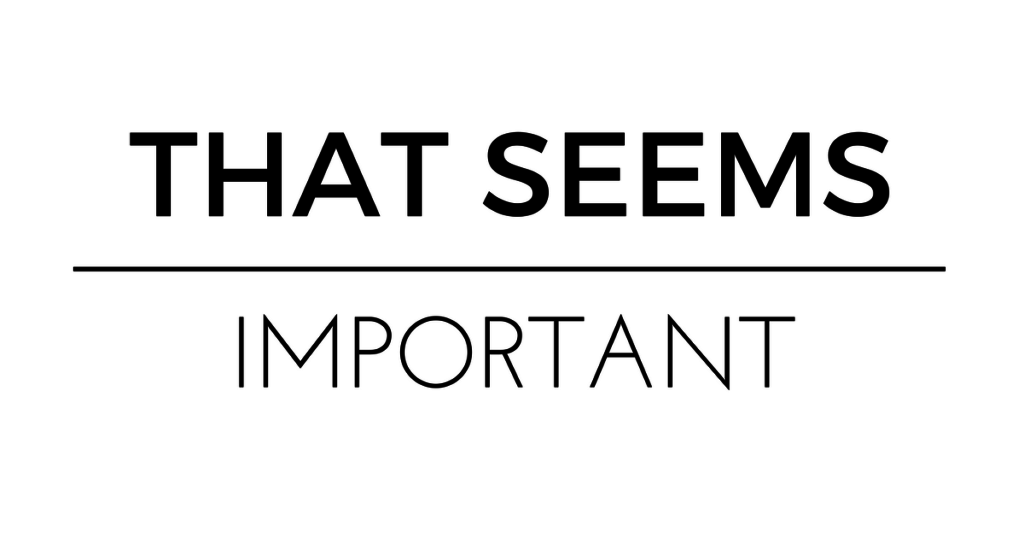This post was originally published on Inc.com.
As a non-tech founder, I understand the resistance that comes with doing anything that makes you feel stupid. For me, that includes web design, HTML, and search engine optimization (SEO). This was particularly embarrassing since SEO is one of the most foundational digital marketing tools in the toolbox and I was “technically” a digital marketer.
Realizing I couldn’t claim ignorance any longer, I Googled around for some articles and immediately overwhelmed myself. I didn’t want to be an “SEO Expert,” I just wanted to know enough to not be an idiot. How does SEO work and how far down the geek rabbit hole do I need to go to get SEO working for me?
To get the answers, I called up Bradford Crabtree CEO Michael Tesalona and asked him to sit down with me so I could ask him the questions I’d be embarrassed to ask in public. I wish I had this years ago.
Here’s how he broke it down:
1. You don’t need to be as geeky as you thought
For starters, learning that most of SEO is conjecture immediately made me feel better. Dozens of clients have ended up on the first page of Google thanks to Tesalona’s efforts, still he explained, “No one really knows what Google’s search engine ranking criteria are, but after years of following trends and getting results for clients, we have a pretty good idea of what definitely matters.”
The running joke is if you ask 5 SEO “experts” you’ll get 5 different explanations of what matters. “There’s a lot of debate within the field, but there are still basics that transcend everything that the majority of business owners ignore because they’re caught up in the debate,” he said.
If you get those basics down, “you’ve satisfied the geek quota and the rest of the time you need to focus on backlinks,” Teslaona says. I could work with that.
2. There are 5 on-site elements you need to know–and you can ignore the rest
There are two basic buckets of SEO: on-site and off-site. On-site refers to the SEO-related things you need to do on your website.
The most important element (we think) is the keyword. The keyword is the thing you rank for on Google. For example, if I wanted to show up on a search for “SEO basics” I’d need to make it the keyword for this web page.
You could write a whole dissertation on how to find and choose a keyword, but for the sake of your sanity and the length of this post, I’ll say this: find a keyword that is relevant to what your web page content is about.
If you download tools like Yoast (a WordPress plugin), you can type in the keyword you want to rank for into the tool and move on with your day (if you have Squarespace or Wix or another website builder, they have similar features).
Once you have your keyword, you want to focus on these 5 on-page elements. You have these on every single page of your website:
- Page Titles (the title of your page, usually the headline – it’s the headline you see when you Google something)
- H-Tags (The headings you use for the text of your page, there’s usually 5 options)
- Meta Descriptions (the snippet that describes the content on your page, goes under the Page Title)
- URL Structure (you know this one, it’s what comes after www.)
- Alt-Tags (the description of an image you’re using on your web page; it shows up when your image doesn’t load)
If you are like me and have no idea what those mean, I promise they’re less scary than they sound.
Teslaona says if you get these down, “you’ve satisfied the geek quota and the rest of the time you need to focus on backlinks.”
3. Backlinks are REALLY important
This is the “off-site” stuff. Anytime you see something hyperlinked – that’s a backlink. It’s a link that’s on an external site (not your site) that point to your website.
This is a backlink to my website That Seems Important. You click on it and it sends you to my homepage.
The text that’s highlighted is called the “anchor text.”
Where it gets a little more complicated is the type of anchor text that is used. There are 3 types:
- Naked URL: That’s when you see this www.thatseemsimportant.com
- Branded: That’s the That Seems Important (same one as above)
- KeyWord Anchor: This is when the keyword for your post is hyperlinked, so if I wanted to backlink my Inc post on how I built my business without a website, I’d hyperlink the word website since that was the keyword I wanted to rank for
Tesalona recommends your anchors be 25% branded, 25% naked, and 50% keyword.
Most SEO companies spend their time on this backlinks part. Companies like Bradford Crabtree charge upwards of $300 per backlink. If that’s not in your budget, you can do things like guest post for free on a blog or get media coverage for your business – those work as well.
4. Not all backlinks are created equal
Each website is ranked differently in terms of authority. Google uses a metric called “Page Rank” to determine this authority but, unfortunately, they no longer publicly disclose website Page Rank. If you have a backlink on JoeShmo’s blog, it won’t be weighted as heavily as if it came from Inc.
Don’t ask me to explain more about this part, I don’t know how they determine the Page Rank. I just know that it exists.
Tesalona says to determine if a website is a good for a backlink, you want to look for two things:
- Does it make sense to my niche?
- How many links do they have? (this means “how many sites are linking to their site?” It works, quite literally, like a web.)
Tesalona says, “Since Google doesn’t publicly state Page Rank the SEO community is split on what the ‘gold standard’ is,” when it comes to domain strength. He recommends using tools like Moz and ahrefs to help, even if you’re a beginner. “These tools have their own metrics – domain authority and domain ranking – when you get familiar with these metrics you’ll be able to spot a strong website” and it gets easier.
5. Know enough to be dangerous – or be prepared to waste money
Tesalona says that while you don’t need to know all the details, you do need to be able to evaluate whether the people you hire to help you are doing a good job.
I cannot underscore this point enough.
Where most people mess up is by not doing their due diligence in learning the basics. Instead, they have no clue what they need and hire the first company that claims they can help.
This is where non-tech founders like us stand to lose a lot of money.
You need to be familiar enough to judge whether or not the people you hire are actually doing anything useful. Hopefully, this helps.
Margo Aaron is the founder of That Seems Important, a community of solo-founders who are changing the world through their businesses and platforms.




